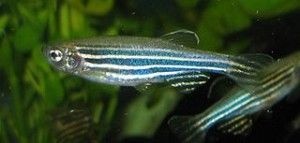
Last month, just a few days after Mardi Gras, hundreds of aquaculture farmers, business leaders, scientists and policymakers converged on New Orleans for the annual Aquaculture America conference. A wide range of fields were represented: food fish, baitfish, zebrafish for genetic research, shellfish, shrimp, and algae for food, fuel and feed. I delivered a talk titled “Public Health Perspectives on Aquaculture,” (abstract) which I presented in a Seafood and Health session. Here are some “notes from the road” highlighting what I found to be interesting and timely topics from among the ~50 talks I attended. (For a complete list of conference abstracts please visit the Aquaculture America website.)
- Two sessions were dedicated to the topic of offshore and marine aquaculture. Susan Bunsick and Carol Price from NOAA presented on offshore aquaculture policy development and a national monitoring framework for offshore aquaculture. Richard Smith of Robinson and Cole, a consulting company, discussed the history of offshore policy in the U.S. and problems with current policies from the perspective of what would scare a potential investor in this sector. Robert Smith of Plauche and Carr LLP discussed a case study of the permitting process for Catalina Sea Ranch Project, a shellfish farm in Southern California. He recommended marine spatial planning be done for the coastline of California to reduce conflicts up-front and identify potential coastal farm sites.
- Several aquaculture businessmen discussed their operations and the industry. Neil Simon discussed offshore aquaculture in the Gulf of Mexico and ways in which the permitting process limited the industry. Don Kent, another aquaculture business executive from Hubbs Sea World, discussed the proposed Rose Canyon Fisheries offshore finfish operation in Southern California and the challenges in the permitting process. He speculated that if his planned operation does not get approval in a timely fashion they will move to Baja Mexico.
- Michael Chambers, a researcher at the University of New Hampshire, provided a different perspective on offshore aquaculture. Based on his research on offshore finfish production in the Northeast, he found the cages difficult to maintain in the winter (due to the weather and wave action), expensive to reach by boat (due to fuel costs), and ultimately not a good approach due to higher costs and risks than near-shore ocean aquaculture. Admittedly, some of these issues may not apply to warmer water operations. Chambers has transitioned his work to integrated multi-trophic aquaculture using near-shore net pen finfish, kelp, and mussels as a more economically sustainable approach to ocean aquaculture in the Northeast.
- The USDA Animal and Plant Health Inspection Service (APHIS) presented on a planned framework for improving and verifying fish health. The program is called CAHPS, or Commercial Aquaculture Health Program Standards, and is a voluntary program implemented at the request of the National Aquaculture Association. The program draws on existing resources within APHIS, which already supports animal health for livestock and poultry. A major outcome of the CAHPS program will be to provide documented disease-free status of juvenile fish or seeds to enable large aquaculture breeders to sell these products overseas.
- The algae aquaculture industry had a session on microalgae production for aquaculture feed, human food and nutraceuticals, and as a biofuel. One company, Aurora Algae, has an algae food ingredient that is pending FDA approval as GRAS (generally regarded as safe). Currently, there exists the technology to raise algae in large outdoor saltwater ponds that are injected with CO2 or in indoor bioreactors fed by sugars. The crux is whether these processes can be brought up to scale and done so efficiently so that start-ups can sell algae (as food or feed) for a competitive price. Currently, algae meal is more expensive than fish meal (more than ~$1,500 per ton).
- Experts from the USDA spoke about the ongoing effort to create a USDA Organic policy and label for seafood. This effort involves the USDA National Organic Program as well as an independent body, the National Organic Standards Board. A draft rule is expected to be released this summer with a 90-day public comment period. After comments are addressed, the rule could be finalized by the end of 2016, but more likely after a new president is sworn in office in 2017. See my previouspost for background information on the USDA Organic standards for aquaculture.



